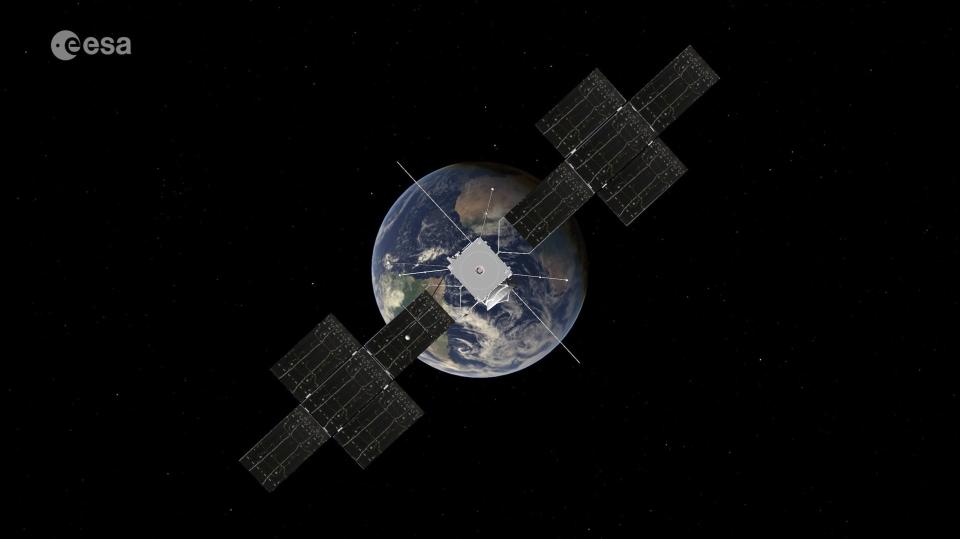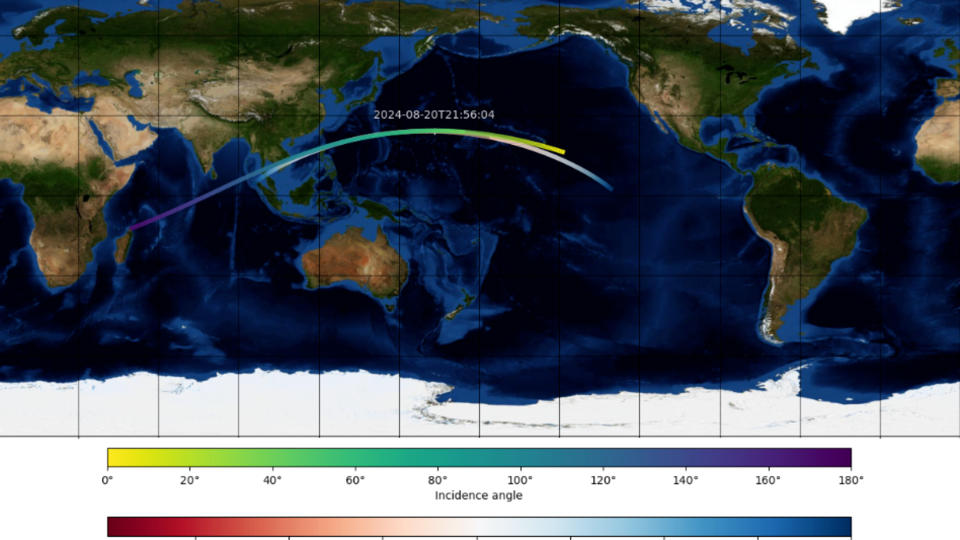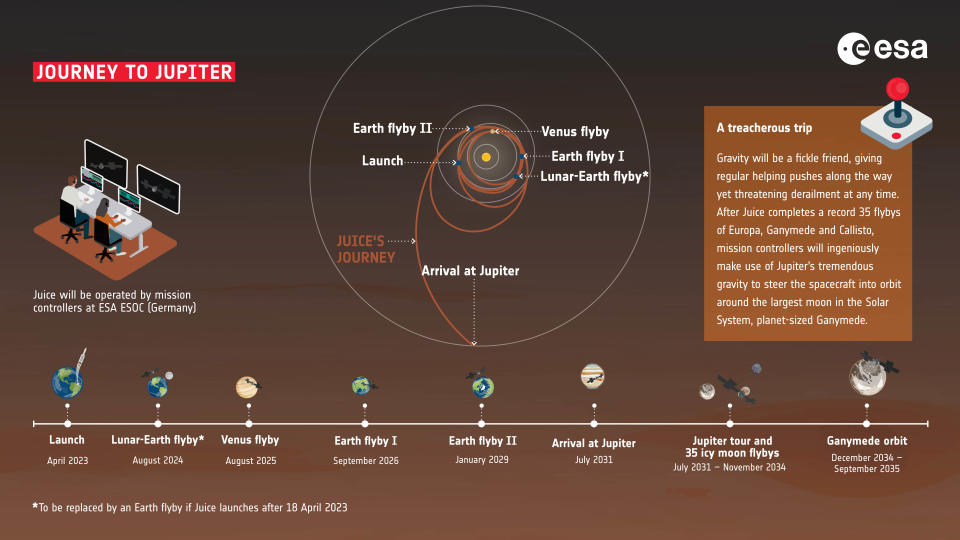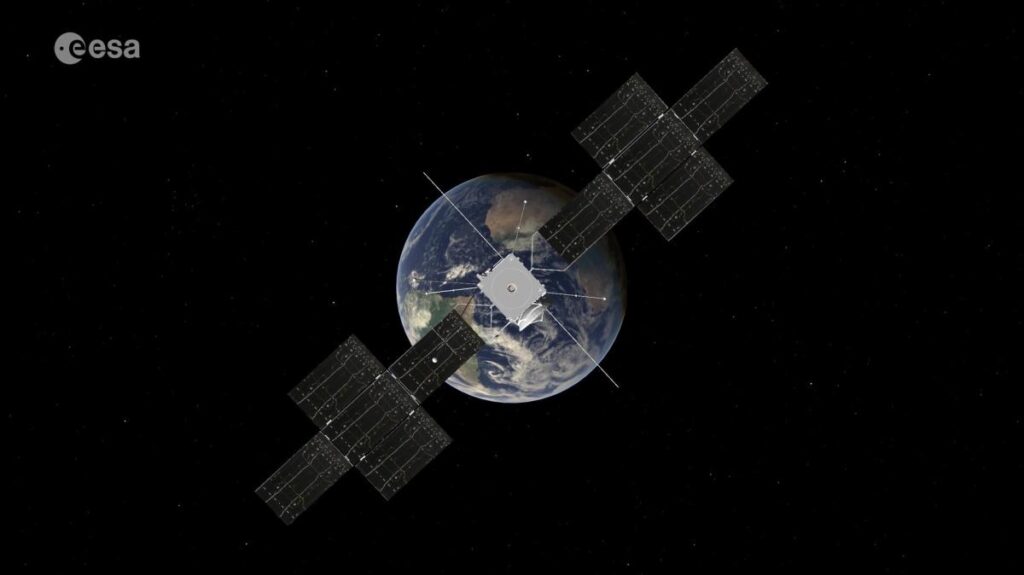When you buy through links in our articles, Future and its syndication partners may earn a commission.


Europe’s Jupiter Icy Moons Explorer, or JUICE for short, is expected to fly by Earth next month. Some stargazers may catch a glimpse of the spacecraft.
The 1.1 billion dollars JUICEEurope’s first ever Jupiter mission, ascended in April 2023 to study Jupiter and three of its largest moons – Ganymede, Callisto and Europeall of which are thought to harbor oceans of liquid water beneath their ice-covered surfaces.
On August 19th and 20th Juice will slide by the moon and then Earth to get a gravitational boost. On August 20, JUICE will make its closest approach to Soil at 5:57 p.m. Eastern Time (9:57 p.m. GMT), at an altitude of just 4,200 miles (6,800 kilometers) above Earth’s surface.


The approach will come over Southeast Asia and the Pacific Ocean, and JUICE may be visible to some people in those regions. “A powerful pair of binoculars or a telescope will give you the best chance of seeing the spacecraft,” European Space Agency (ESA) officials said in a statement.
Related: JUICE: A Complete Guide to the Exploration Mission of Jupiter’s Icy Moon
The maneuvers will change the speed and course of the spacecraft, making JUICE ready for one flyby of Venus next year and two from Earth in early 2029, putting the probe on track to arrive in the Jupiter system as planned in 2031. The three flybys are “the equivalent of drinking three espressos in a row during space exploration,” ESA officials said.
During the upcoming flyby, the mission team plans to turn on JUICE’s 10 science instruments, including a key antenna called RIME (“Radar for Icy Moon Exploration”) that struggled to unfold in space after launch and only deployed after three weeks intensive problem solving effortsAccording to ESA, the instrument is still affected by electronic noise inside the spacecraft.
On Aug. 19, engineers will have eight minutes of solo time with RIME to see how the noise affects the instrument’s performance. The remaining instruments will be turned off or reduced to a silent mode, ESA officials said. Based on the brief observations, scientists may be able to devise a new algorithm to fix the noise problem.


While the JUICE team is confident that the upcoming flyby manoeuvres will be completed successfully, there are risks involved, including relying on “real-time pinpoint accuracy” of the probe’s position, the ESA statement said.
“It’s like driving very, very fast through a very narrow corridor: you press the accelerator all the way down and the margin on the side of the road is just a few millimeters,” Ignacio Tanco, the mission’s operations manager, said in the statement.
Ground stations around the world will be in constant contact with JUICE starting on August 17, two days before the lunar flyby. Operators will monitor the spacecraft’s data streaming and make any necessary adjustments to keep it on track, ESA said.
However, there are some unavoidable communications issues, such as the half-hour outage on August 19 when JUICE disappears behind the Moon and a 20-minute period on August 20 when the ground station loses sight of the spacecraft, also shortly before it makes its closest approach to our planet.
RELATED STORIES:
— The 15 Must-See Stargazing Events of 2024
— Jupiter missions: past, present and future
— Photos: The Galilean Moons of Jupiter
To travel to Jupiter without gravity assist, scientists estimate that JUICE would need to carry as much as 132,000 pounds (60,000 kilograms) of fuel. Thanks to the expected help from these planetary flybys, the spacecraft launched with just 8,000 pounds (3,650 kg).
Of that precious reserve, 800 pounds (363 kg), or 10 percent of the total, was used up in 43 minutes last November, when the mission team adjusted JUICE’s path so that it would first glide past the moon, then pass Earth a day later, at the right time, speed and direction next month. If all goes according to plan, the remaining fuel won’t be needed until JUICE arrives at Jupiter, Tanco previously said.
During the flyby on August 20, Juice’s two cameras will take pictures of the moon and Earth. Once the spacecraft beams them home, the images will be published on social media, ESA said.







